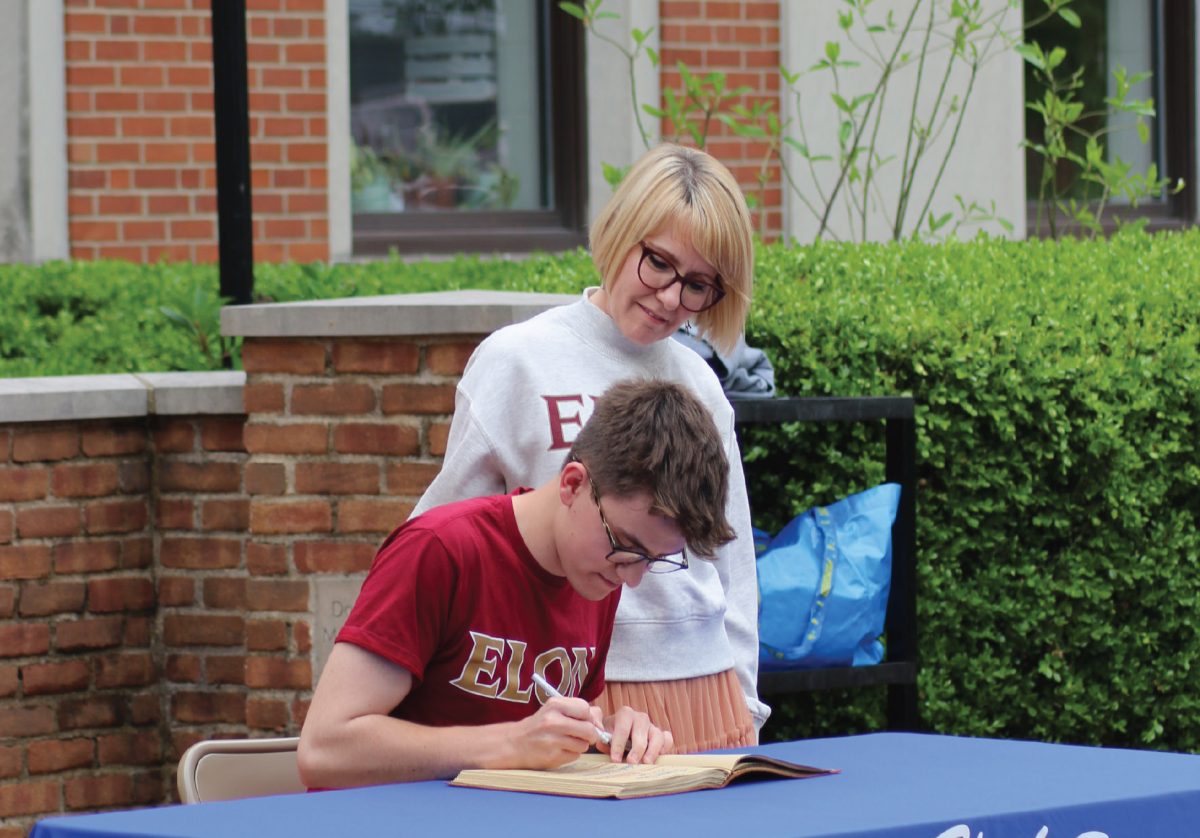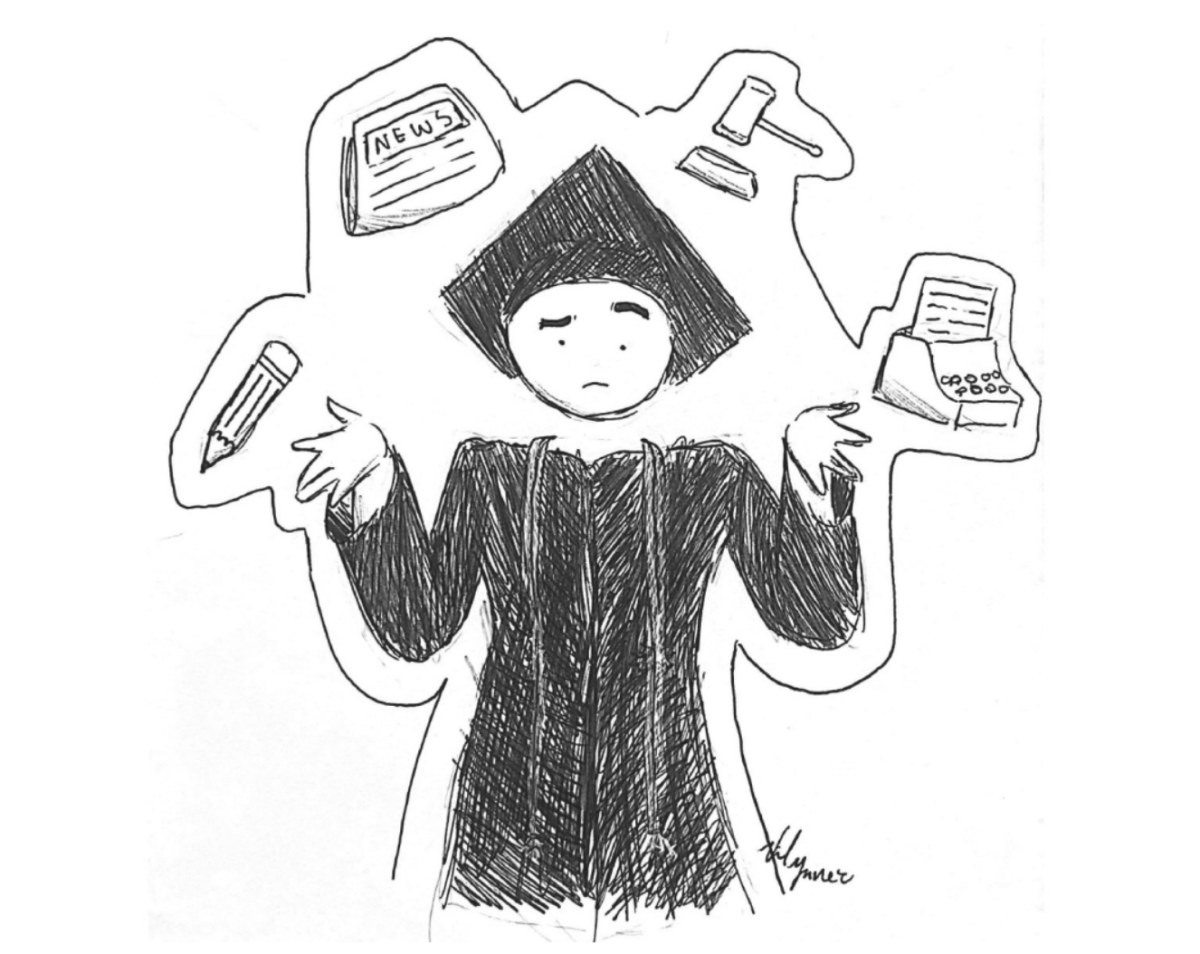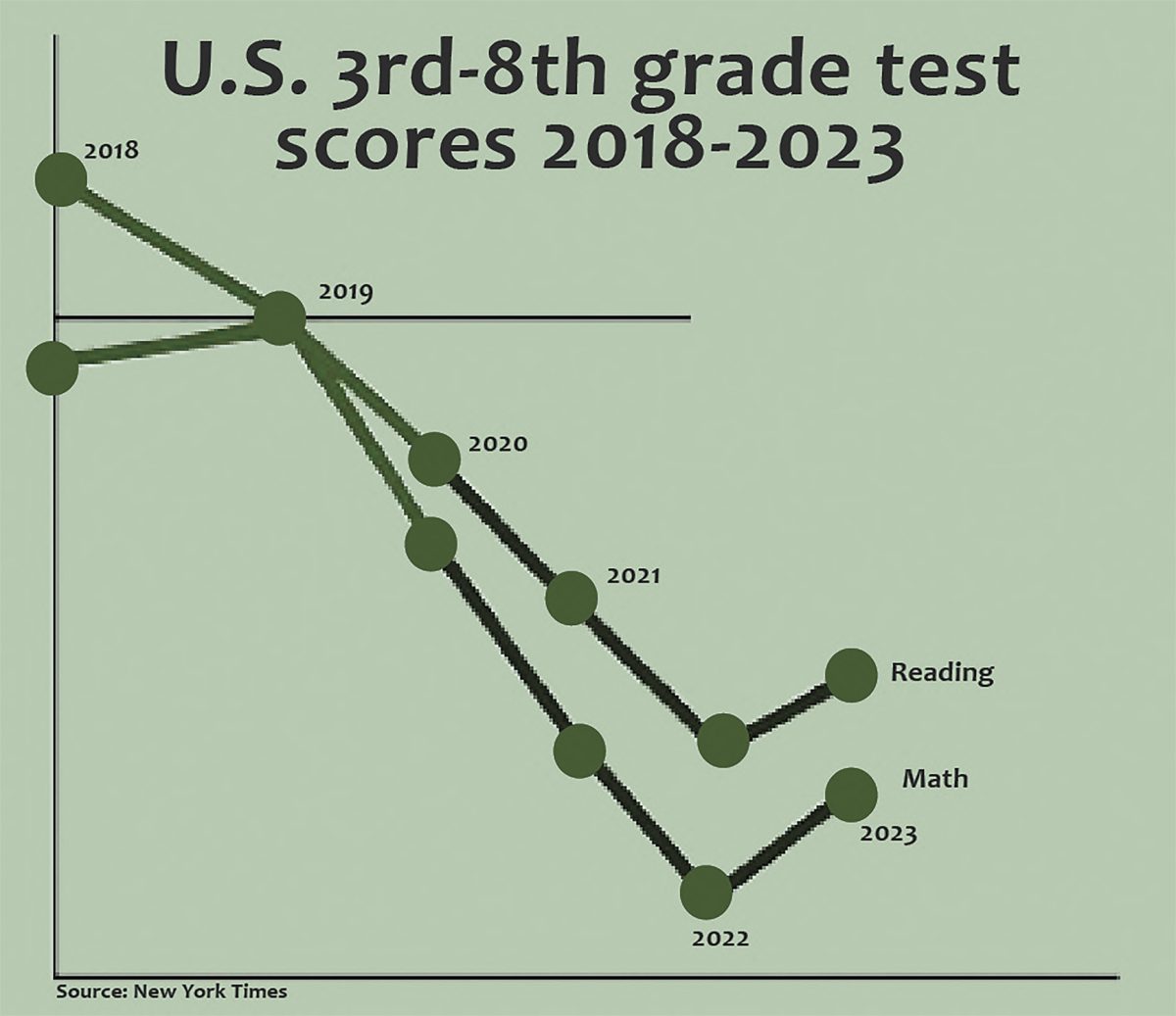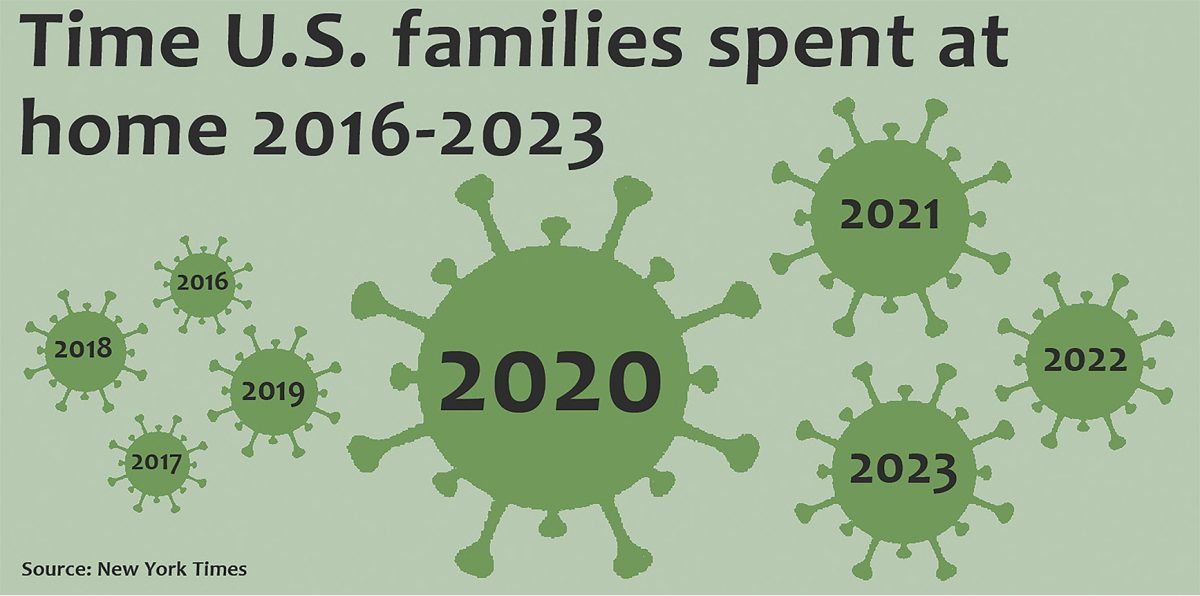The Board of Education has approved Interim Superintendent Dan Good’s resolution to go all-in for the remaining weeks of school following spring break. Though the high school is introducing a handful of new COVID-19 precautions, the plan to go all-in is ill-advised and not worth the impending risks it will present, as it will increase potential for the spread of COVID-19 and will cause unnecessary challenges for staff members.
Upon sending all of the high school students back into the building together, the spread of COVID-19 will be much more likely to increase when the school’s adapted all-in guidelines are put in place. As decided at the Friday, Feb. 19 Board meeting, the school is adding precautions such as requiring students to wear two masks at all times, but they are also eliminating the one-way hallways, therefore increasing the two-way traffic in between classes, allowing for students to be less than the recommended distance apart.
Not only this, but the Board also declared in the meeting that the mandatory distance between students will decrease from six feet to three feet. According to the CDC, a six foot distance between each individual should be upheld whenever possible, but with desks spaced out just three feet apart under the high school’s all-in plan, students will be within three feet of their classmates for a majority of their time in the building. With these precautions that have effectively kept students safe during hybrid being changed and lifted, along with doubling the amount of people in the building, the risk of spreading COVID-19 will increase.
In addition, this will increase the risk of having to cancel the few end-of-year events the school has been able to plan for its students such as athletics, extracurricular activities, a modified prom and even graduation. Furthermore, the plan provides students with a traditional school experience for only the final two months of the school year and is not worth the added risks it will generate.
Not only does this resolution create unnecessary risks, it was decided at the last minute and without much warning. The resolution was passed just one month before students are expected to be all-in, and although this may seem like plenty of time to prepare for the adjustment, teachers were presented with the task of having to adjust not only their lesson plans and schedule, but also the layout of their rooms. Teachers have had their rooms set up to meet the hybrid guidelines this year but are now expected to make sudden changes to their rooms once again to accommodate classes with upwards of 25 or more students. Expecting teachers to restructure their classrooms to meet the school’s guidelines is not a simple request. For many teachers, classrooms may be too small to spread out the necessary number of desks at a safe distance in the first place. This is an issue that is their responsibility to solve in addition to the already existing stressors that have resulted from the abnormalities and challenges of the past year.
The district has justified their decision to go all-in by saying that since 88% of the high school’s teaching staff have been vaccinated, the spread of COVID-19 will be less of an issue than it previously was before these vaccinations. Though this is true among the members of the staff who have received the vaccine, the portion of teachers who have not received the vaccine, along with the entire student population, are no more protected from the spread of the virus than they have been before now. According to The Atlantic, Chief Medical Advisor Anthony Fauci has said that it is likely that those who have received the COVID-19 vaccine are still able to transmit the virus to those who have not yet been vaccinated. This indicates that, though teachers are not at a high risk of getting the virus themselves, it is possible that they would be able to further the spread of the virus within the school.
The high school’s resolution to send students back to school full-time is unwise, as it could cause many risks and unnecessary complications within the school. There are very few things we know about the coronavirus for certain, and few of them are positive. The high school’s all-in plan simply adds additional uncertainty at a time that we cannot take any more. We are very fortunate that COVID-19 cases in Ohio have slowed over the recent weeks, but this shouldn’t be an invitation for us to allow the number of cases to return to what they once were. The spread of COVID-19 has decreased as a result of the precautions our communities, government and schools have put in place. Now is not the time to take these precautions away.














